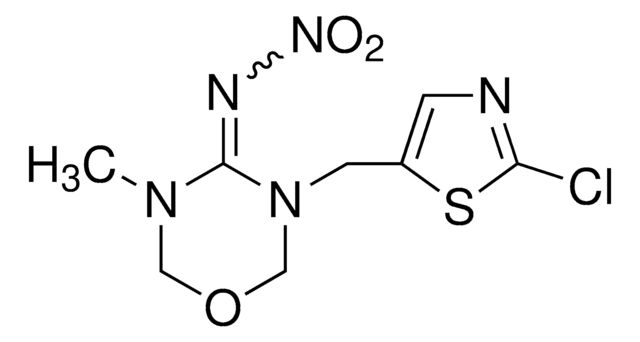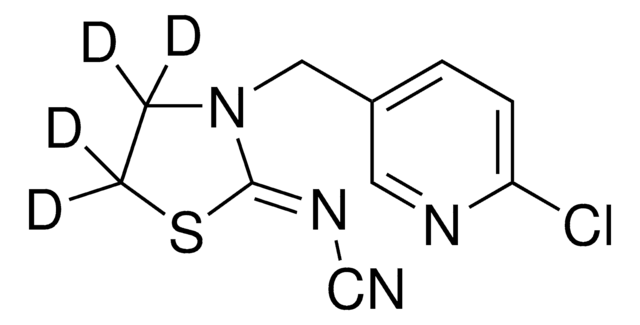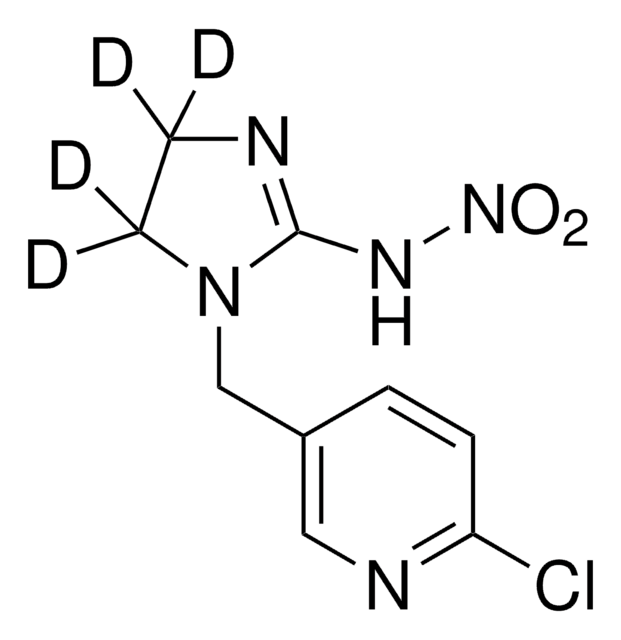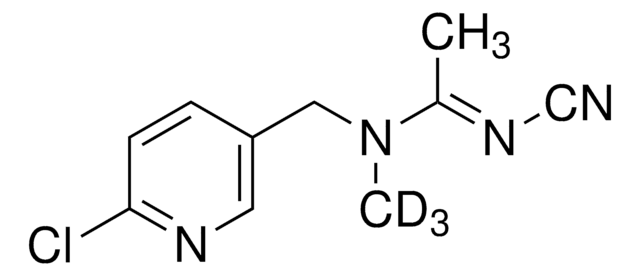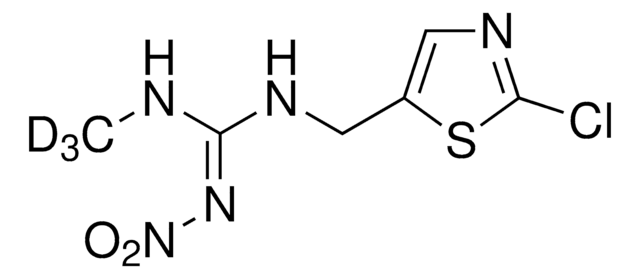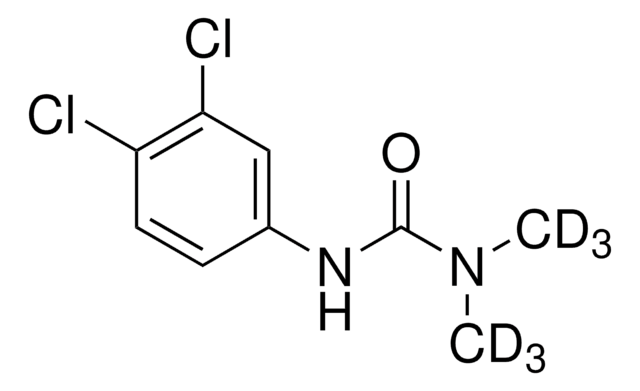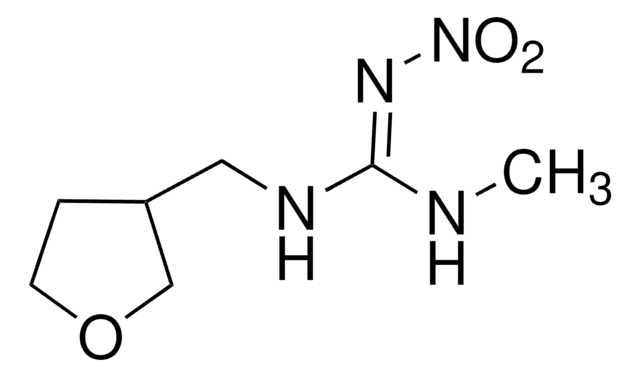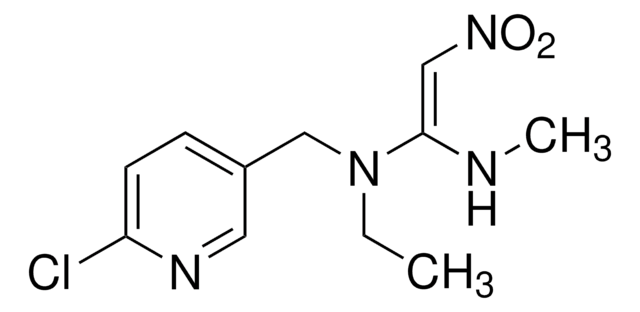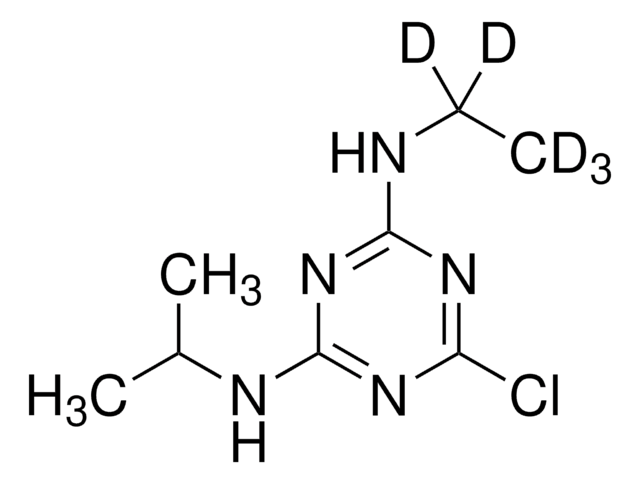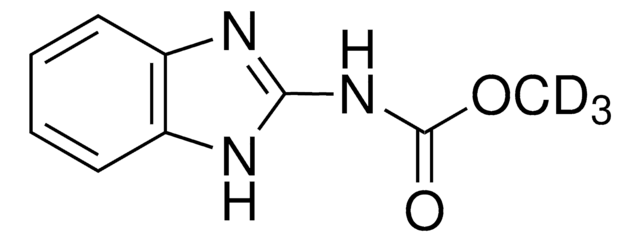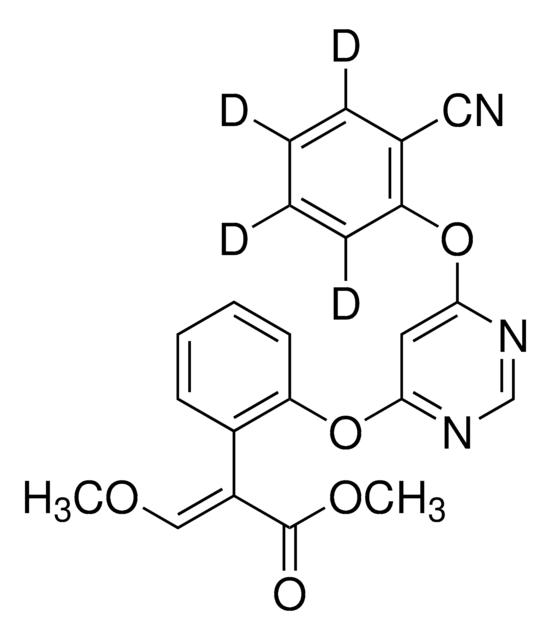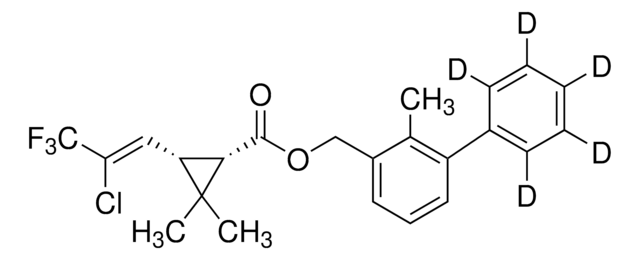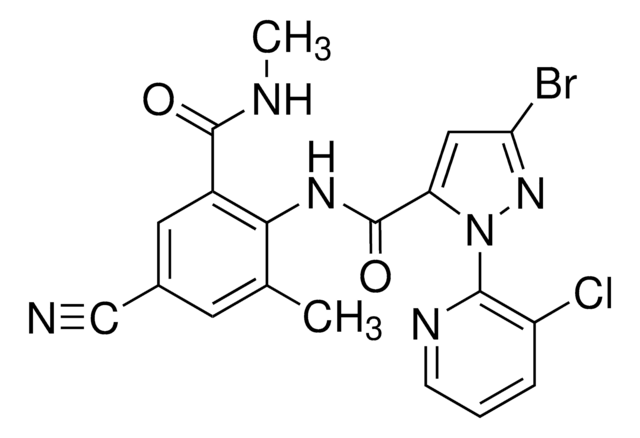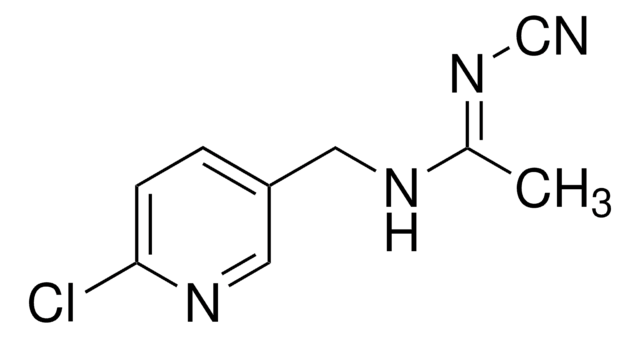38176
Thiamethoxam-d3
PESTANAL®, analytical standard
Sinonimo/i:
3-(2-Chloro-5-thiazolylmethyl)tetrahydro-5-methyl-d3-N-nitro-4H-1,3,5-oxadiazin-4-imine
About This Item
Prodotti consigliati
Grado
analytical standard
Livello qualitativo
Nome Commerciale
PESTANAL®
Saggio
≥98.0% (HPLC)
Durata
limited shelf life, expiry date on the label
tecniche
HPLC: suitable
gas chromatography (GC): suitable
applicazioni
agriculture
environmental
Formato
neat
Spostamento di massa
M+3
Stringa SMILE
[2H]C([2H])([2H])N1COCN(Cc2cnc(Cl)s2)\C1=N\[N+]([O-])=O
InChI
1S/C8H10ClN5O3S/c1-12-4-17-5-13(8(12)11-14(15)16)3-6-2-10-7(9)18-6/h2H,3-5H2,1H3/b11-8+/i1D3
NWWZPOKUUAIXIW-VZOBLPKOSA-N
Categorie correlate
Descrizione generale
Applicazioni
Confezionamento
Note legali
Prodotti correlati
Avvertenze
Danger
Indicazioni di pericolo
Consigli di prudenza
Classi di pericolo
Acute Tox. 4 Oral - Aquatic Acute 1 - Aquatic Chronic 1 - Flam. Sol. 1 - Repr. 2
Codice della classe di stoccaggio
4.1B - Flammable solid hazardous materials
Classe di pericolosità dell'acqua (WGK)
WGK 3
Punto d’infiammabilità (°F)
Not applicable
Punto d’infiammabilità (°C)
Not applicable
Scegli una delle versioni più recenti:
Possiedi già questo prodotto?
I documenti relativi ai prodotti acquistati recentemente sono disponibili nell’Archivio dei documenti.
I clienti hanno visto anche
Protocolli
Learn more about Neonicotinoids - active substances used in plant protection products to control harmful insects.
On Friday, April 27, 2018, the European Union decided to ban the use of three neonicotinoid insecticides from use on field crops, having deemed them dangerous to bees. This application demonstrates the analysis of these banned compounds and others from dandelion blossoms using QuEChERS and LC-MS.
Il team dei nostri ricercatori vanta grande esperienza in tutte le aree della ricerca quali Life Science, scienza dei materiali, sintesi chimica, cromatografia, discipline analitiche, ecc..
Contatta l'Assistenza Tecnica.